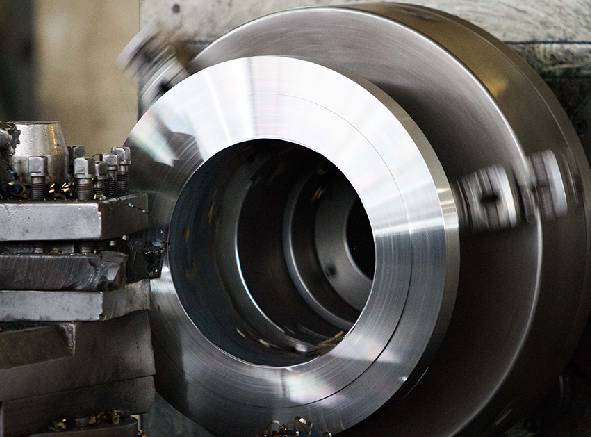-
Cangzhou Yulong Steel Co., Ltd.
-
Phone:
+86 13303177267 -
Email:
admin@ylsteelfittings.com
- English
- Arabic
- Italian
- Spanish
- Portuguese
- German
- kazakh
- Persian
- Greek
- French
- Russian
- Polish
- Thai
- Indonesian
- Vietnamese
- Zulu
- Korean
- Uzbek
- Hindi
- Serbian
- Malay
- Ukrainian
- Gujarati
- Haitian Creole
- hausa
- hawaiian
- Hebrew
- Miao
- Hungarian
- Icelandic
- igbo
- irish
- Japanese
- Javanese
- Kannada
- Khmer
- Rwandese
- Afrikaans
- Albanian
- Amharic
- Armenian
- Azerbaijani
- Basque
- Belarusian
- Bengali
- Bosnian
- Bulgarian
- Catalan
- Cebuano
- China
- China (Taiwan)
- Corsican
- Croatian
- Czech
- Danish
- Esperanto
- Estonian
- Finnish
- Frisian
- Galician
- Georgian
- Kurdish
- Kyrgyz
- Lao
- Latin
- Latvian
- Lithuanian
- Luxembourgish
- Macedonian
- Malgashi
- Malayalam
- Maltese
- Maori
- Marathi
- Mongolian
- Myanmar
- Nepali
- Norwegian
- Norwegian
- Occitan
- Pashto
- Dutch
- Punjabi
- Romanian
- Samoan
- Scottish Gaelic
- Sesotho
- Shona
- Sindhi
- Sinhala
- Slovak
- Slovenian
- Somali
- Sundanese
- Swahili
- Swedish
- Tagalog
- Tajik
- Tamil
- Tatar
- Telugu
- Turkish
- Turkmen
- Urdu
- Uighur
- Welsh
- Bantu
- Yiddish
- Yoruba

Dec . 24, 2024 07:03 Back to list
Standards for High-Pressure Pipeline Flanges and Design Specifications
Understanding JIS B 2220 Standards for Bolted Joints
In various engineering applications, bolted joints are critical components that ensure the reliability and safety of structures and machinery. The Japanese Industrial Standards (JIS) have established a variety of specifications to standardize the design and use of these joints. One such standard is JIS B 2220, which outlines essential guidelines for bolted joints, particularly focusing on flanged joints in pressure vessels and piping systems.
Overview of JIS B 2220
JIS B 2220 is a Japanese standard that specifies the dimensions, tolerances, and performance characteristics for flanged joints used in piping and pressure vessel applications. The standard primarily addresses the design and construction of flanges, bolt specifications, and gasket types. It aims to provide a clear framework that enhances interoperability among components and ensures the integrity of the assembly.
Key Components of JIS B 2220
1. Flange Types and Sizes JIS B 2220 details various flange types commonly used in industrial applications, including weld neck, blind, slip-on, and threaded flanges. The standard specifies the dimensions for each flange type, ensuring that users can select the correct size and type for their application.
2. Material Specifications The standard outlines the acceptable materials for flanges and bolts, ensuring compatibility with the specific operating conditions of the system. Common materials include carbon steel, stainless steel, and various alloys, which are chosen based on factors such as temperature, pressure, and the nature of the fluids being handled.
3. Bolt Specifications Bolts are one of the critical components of bolted joints. JIS B 2220 specifies the dimensions, strength requirements, and tolerances for bolts used in conjunction with the flanges. The standard also addresses the number of bolts required for different joint designs to ensure adequate clamping force.
4. Gasket Types To achieve a leak-proof seal between flanged joints, gaskets are essential. JIS B 2220 identifies various gasket types compatible with the specified flanges, including rubber, metal, and composite gaskets. The choice of gasket material and design is crucial for maintaining the integrity of the joint under varying pressure and temperature conditions.
jis b2220 10k

Importance of JIS B 2220
Adhering to standards like JIS B 2220 is vital for ensuring safety and reliability in engineering applications. Here are several reasons why this standard holds significance
1. Interoperability JIS B 2220 promotes uniformity in the design and manufacturing of bolted joints. This uniformity is crucial for ensuring that components from different manufacturers can fit and function together seamlessly.
2. Safety In industries such as oil and gas, chemical processing, and power generation, the failure of a bolted joint can lead to catastrophic consequences, including leaks, explosions, or equipment failure. By following JIS B 2220, engineers can contribute to the safety of their designs.
3. Quality Assurance Compliance with JIS B 2220 helps organizations maintain high-quality standards in the manufacturing process. It provides a benchmark against which engineers and manufacturers can evaluate their products, ensuring that all components meet specific safety and performance criteria.
4. Regulatory Compliance In many regions, adherence to recognized standards is a regulatory requirement. Following JIS B 2220 can facilitate compliance with local and international regulations concerning equipment safety and reliability.
Conclusion
JIS B 2220 is a comprehensive standard that plays a crucial role in the design and implementation of bolted joints, particularly in flanged connections for pressure vessels and piping systems. By establishing clear guidelines for flange dimensions, material specifications, bolt strength, and gasket types, the standard enhances safety, interoperability, and quality assurance in engineering practices. As industries continue to evolve, the principles outlined in JIS B 2220 will remain vital in ensuring that bolted joints can withstand the demands of modern engineering while prioritizing safety and reliability. Understanding and implementing these standards will empower engineers and manufacturers to create safe, efficient, and durable systems across various applications.
Latest news
-
ANSI 150P SS304 SO FLANGE
NewsFeb.14,2025
-
ASTM A333GR6 STEEL PIPE
NewsJan.20,2025
-
ANSI B16.5 WELDING NECK FLANGE
NewsJan.15,2026
-
ANSI B16.5 SLIP-ON FLANGE
NewsApr.19,2024
-
SABS 1123 FLANGE
NewsJan.15,2025
-
DIN86044 PLATE FLANGE
NewsApr.19,2024
-
DIN2527 BLIND FLANGE
NewsApr.12,2024
-
JIS B2311 Butt-Welding Fittings LR/SR 45°/90° /180°Seamless/Weld
NewsApr.23,2024











